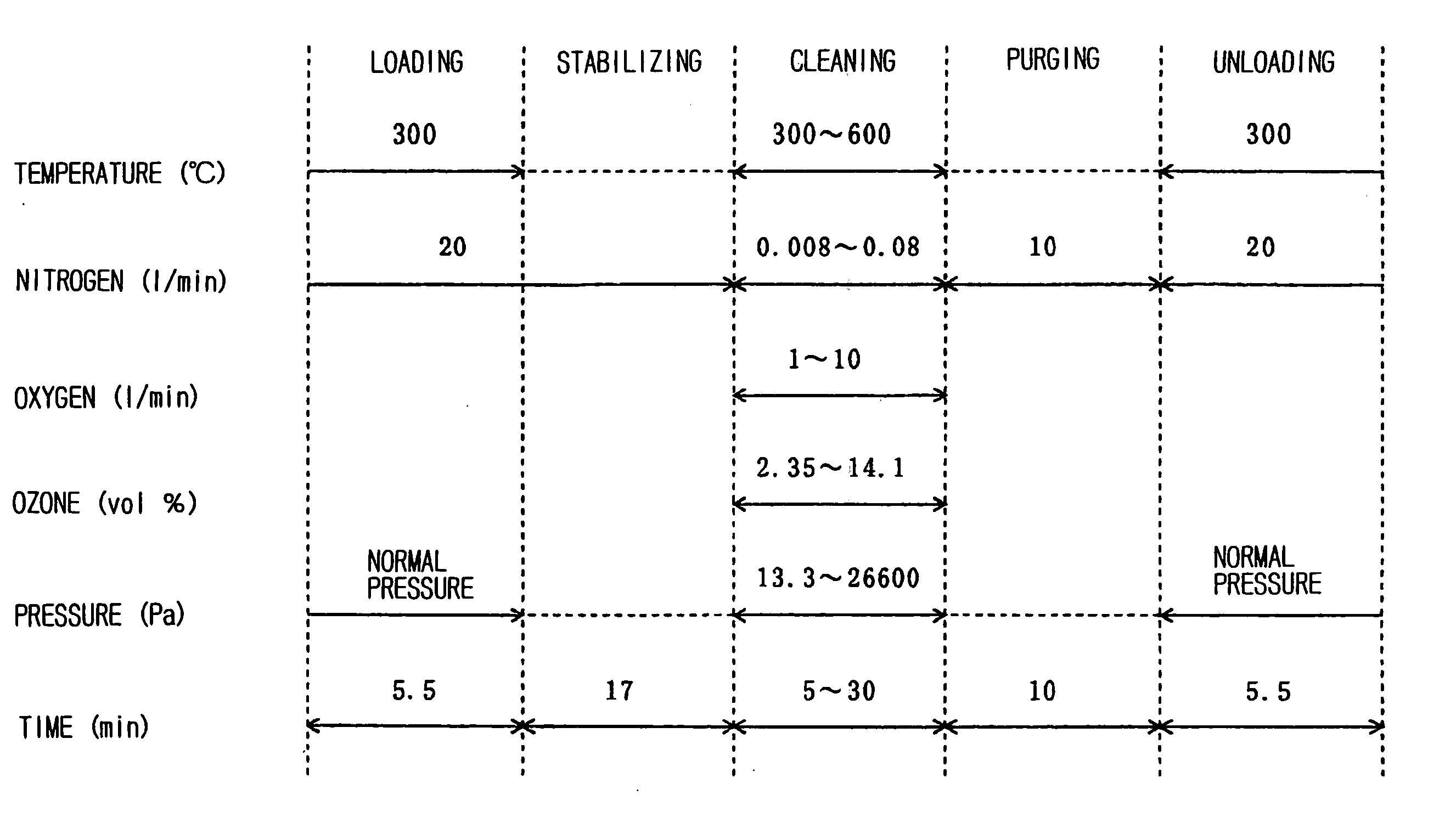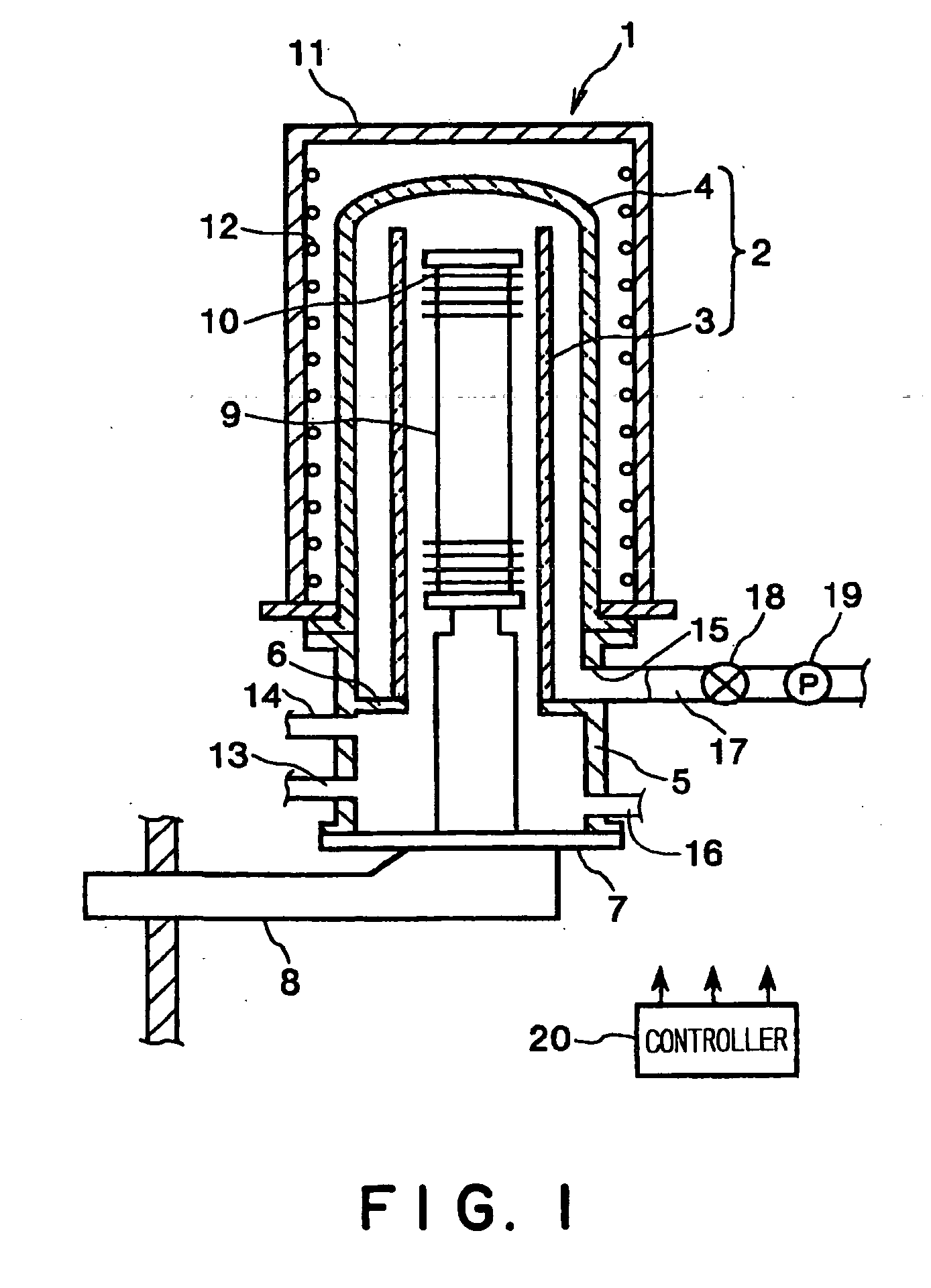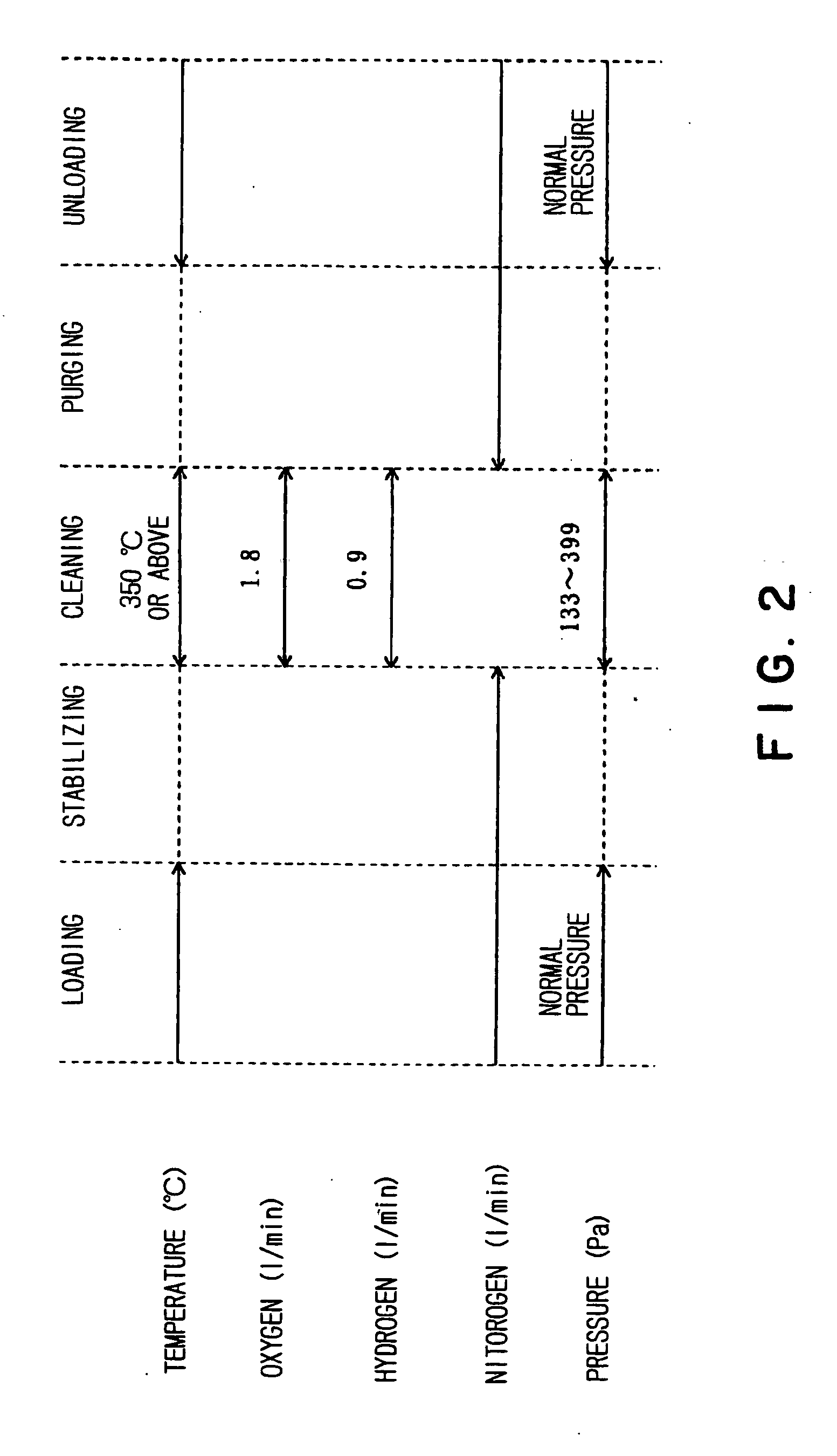Method and apparatus for treating article to be treated
a technology for treating articles and objects, applied in the field of methods and apparatus for processing objects, can solve problems such as difficult to clear the clean room completely, organic contaminants adhesion to the wafer, and deterioration of the characteristics of semiconductor devices
- Summary
- Abstract
- Description
- Claims
- Application Information
AI Technical Summary
Benefits of technology
Problems solved by technology
Method used
Image
Examples
first embodiment
[0088] The thermal treatment apparatus 1 in the first embodiment is capable of removing organic substances from a plurality of wafers 10 held on the wafer boat 9 at one time, and hence many wafers 10 can be cleaned in a short time.
[0089] Possible modifications in the first embodiment will be described.
[0090] The first embodiment uses oxygen gas as the oxidizing gas and hydrogen gas as the reducing gas. The oxidizing gas may be at least one of O.sub.2, N.sub.2O and NO, and the reducing gas may be at least one of H.sub.2, NH.sub.3 and CH.sub.4. Organic substances adhering to the wafers 10 can be removed from the wafers 10 by using the active oxygen species and active hydroxyl species produced by the combustion of the reducing gas. The organic substances can be removed from the wafers 10 under the same cleaning conditions including the internal temperature and the internal pressure of the reaction tube 2, when an oxidizing gas other than oxygen gas and a reducing gas other than hydroge...
second embodiment
[0094] A second embodiment of the present invention, in which organic substances adhering to wafers (i.e., objects to be processed) are decomposed and removed therefrom (namely, cleaned) by means of a processing gas containing ozone by using a batch type vertical thermal treatment apparatus shown in FIG. 4, will be described.
[0095] Referring to FIG. 4, the thermal treatment apparatus 101 has a substantially cylindrical reaction vessel 102 set with its axis extending vertically. The reaction vessel 102 is a single-wall cylindrical structure having a top wall. The reaction vessel 102 is formed of a heat-resistant material, such as quartz.
[0096] A cylindrical manifold 103 of a stainless steel is disposed underneath the reaction vessel 102. The manifold 103 is joined in an airtight fashion to the lower end of the reaction vessel 102
[0097] A lid 104 is disposed under the manifold 103. A boat elevator, not shown, moves the lid 104 vertically. The lid 104, the reaction vessel 102 and the m...
third embodiment
[0139] A third embodiment of the present invention, in which organic substances adhering to wafers (i.e., objects to be processed) are decomposed and removed therefrom (namely, cleaned) by means of a processing gas containing ozone, and then silicon dioxide thin films are formed on the cleaned wafers by supplying steam onto the wafers, by using a batch type vertical thermal treatment apparatus shown in FIG. 7, will be described.
[0140] As obvious from FIG. 7, the thermal treatment apparatus 121 is substantially the same in construction as the thermal treatment apparatus 101 in the second embodiment, except that the former is provided additionally with a film-forming gas supply pipe 122 for carrying steam as a film-forming gas to cleaned wafers.
[0141] The film-forming gas supply pipe 122 penetrates the side wall of the manifold 103 into the non-processing region 103c. The film-forming gas supply pipe 122 is connected to a combustor, not shown. The combustor produces steam through the ...
PUM
 Login to View More
Login to View More Abstract
Description
Claims
Application Information
 Login to View More
Login to View More - R&D
- Intellectual Property
- Life Sciences
- Materials
- Tech Scout
- Unparalleled Data Quality
- Higher Quality Content
- 60% Fewer Hallucinations
Browse by: Latest US Patents, China's latest patents, Technical Efficacy Thesaurus, Application Domain, Technology Topic, Popular Technical Reports.
© 2025 PatSnap. All rights reserved.Legal|Privacy policy|Modern Slavery Act Transparency Statement|Sitemap|About US| Contact US: help@patsnap.com



